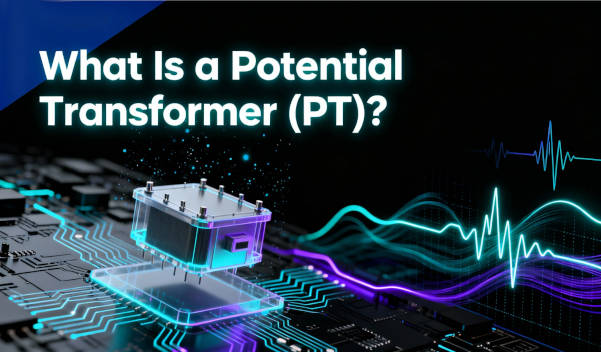Power Modules
Power modules, also known as power electronic modules, are compact, integrated devices that combine multiple power electronic components into a single unit. They are designed to manage and convert electrical power efficiently, often used in applications where high power density and reliability are required.
Definition:
A power module is an assembly of power semiconductor devices, passive components, and sometimes control circuitry, all mounted on a common substrate or baseplate. These modules are encapsulated to protect the internal components and provide thermal management.
Function:
1. Power Conversion: They convert electrical power from one form to another, such as from AC to DC or vice versa.
2. Control: They regulate the flow of power, allowing for precise control of voltage and current.
3. Efficiency: They help in reducing energy losses by minimizing conduction and switching losses.
4. Protection: They often include protection circuits to safeguard against overcurrent, overvoltage, and short circuits.
Applications:
1. Industrial Automation: Used in motor drives and control systems for precise motion control.
2. Renewable Energy: In inverters for solar panels and wind turbines to convert DC to AC power.
3. Electric Vehicles: For battery charging and management systems.
4. Telecommunications: In power supplies for base stations and data centers.
5. Consumer Electronics: In power supplies for computers, TVs, and other devices.
Selection Criteria:
1. Power Rating: The module must be able to handle the required power load.
2. Voltage and Current Ratings: Must match the system's specifications.
3. Efficiency: Higher efficiency modules reduce energy waste and heat generation.
4. Thermal Management: Adequate heat dissipation is crucial for reliability and longevity.
5. Integration Level: Some modules come with integrated control and protection circuits.
6. Form Factor: Must fit within the physical constraints of the application.
7. Reliability and Durability: Modules should have a proven track record of reliability and be designed for the expected operating environment.
8. Cost: While not always the primary factor, cost-effectiveness is important, especially for high-volume applications.
When selecting a power module, it's essential to consider the specific requirements of the application, including the power levels, voltage and current ratings, and the environmental conditions in which the module will operate.
Please refer to the product rule book for details.
Definition:
A power module is an assembly of power semiconductor devices, passive components, and sometimes control circuitry, all mounted on a common substrate or baseplate. These modules are encapsulated to protect the internal components and provide thermal management.
Function:
1. Power Conversion: They convert electrical power from one form to another, such as from AC to DC or vice versa.
2. Control: They regulate the flow of power, allowing for precise control of voltage and current.
3. Efficiency: They help in reducing energy losses by minimizing conduction and switching losses.
4. Protection: They often include protection circuits to safeguard against overcurrent, overvoltage, and short circuits.
Applications:
1. Industrial Automation: Used in motor drives and control systems for precise motion control.
2. Renewable Energy: In inverters for solar panels and wind turbines to convert DC to AC power.
3. Electric Vehicles: For battery charging and management systems.
4. Telecommunications: In power supplies for base stations and data centers.
5. Consumer Electronics: In power supplies for computers, TVs, and other devices.
Selection Criteria:
1. Power Rating: The module must be able to handle the required power load.
2. Voltage and Current Ratings: Must match the system's specifications.
3. Efficiency: Higher efficiency modules reduce energy waste and heat generation.
4. Thermal Management: Adequate heat dissipation is crucial for reliability and longevity.
5. Integration Level: Some modules come with integrated control and protection circuits.
6. Form Factor: Must fit within the physical constraints of the application.
7. Reliability and Durability: Modules should have a proven track record of reliability and be designed for the expected operating environment.
8. Cost: While not always the primary factor, cost-effectiveness is important, especially for high-volume applications.
When selecting a power module, it's essential to consider the specific requirements of the application, including the power levels, voltage and current ratings, and the environmental conditions in which the module will operate.
Please refer to the product rule book for details.
Categories
Datasheets
LTM8073IY#PBF Datasheet
HWS600-24 Datasheet
MFA350PS24 Datasheet
S24SE3R306PDFA Datasheet
THN 10-2411WIR Datasheet
JTK3024S05 Datasheet
LMF1000-20B24 Datasheet
URB4805YMD-20WR3 Datasheet
DCM3623T50T13A6T70 Datasheet
URB4805YMD-20WR3 Datasheet
AME15-24SMAZ Datasheet
R1Z-053.3/HP Datasheet
HTEK16080H-1R0MSR Datasheet
R1Z-053.3/HP-R Datasheet
TUNS100F24 Datasheet
Article

What Is a Potential Transformer (PT)?
Table of Contents + 1. Basic Definition & Background 1.1. What Is a Potential Transformer? 1.2. PT vs Ordinary Transformer vs Instrument Transformer 1.3. Applications of Potential Transformers / What Are Potential Transformers Used For?2. Operation Principle 2.1. Working Principle of a PT / VT 2.2. Voltage Ratio & Turn Ratio Relationship 2.3....
Learn More >
ICkey Named Intel IoT Solution Aggregator, Marking Strategic Milestone in Partnership
ICkey, a leading distributor of electronic components and provider of digital supply chain solutions, has entered into a strategic partnership with global semiconductor giant Intel, becoming an official Intel IoT Solution Aggregator. To commemorate this milestone, the two companies held a signing ceremony under the theme “Smart Connectivity, Powering the Future.” During the ceremony, Bi Fenglei, Senior ...
Learn More >

ICkey Successfully Lists on Shenzhen Stock Exchange ChiNext Board, Empowering Innovation in the Electronics Industry
On September 30, 2025, ICkey (Shanghai) Internet & Technology Co., Ltd. (ICkey) announced its successful listing on the ChiNext Board of the Shenzhen Stock Exchange under the stock code 301563. As a leading vertical B2B supply chain platform in the electronic components sector, ICkey supports the R&D, production, and procurement needs of the electronics manufacturing industry - specifically targeting small and medium-b...
Learn More >

























